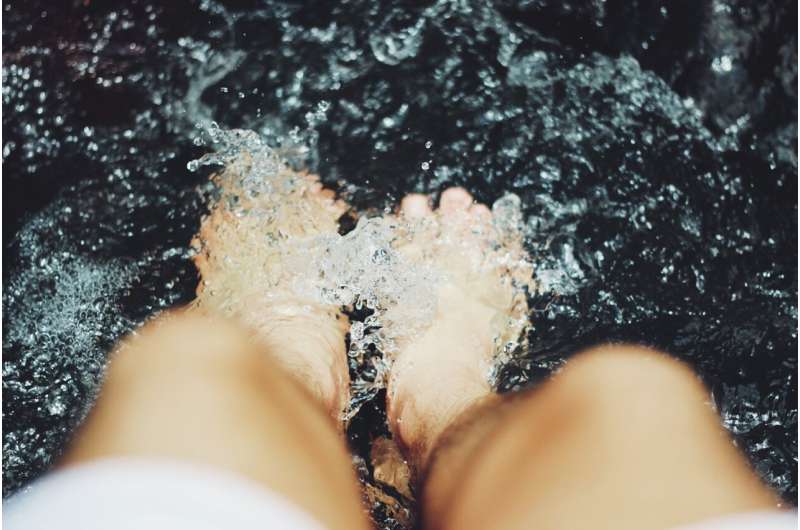This article has been reviewed according to Science X's editorial process and policies. Editors have highlighted the following attributes while ensuring the content's credibility:
fact-checked
trusted source
proofread
Ice baths are popular with celebrities, but what are the health benefits, if any—and risks?

When it comes to workout cool-downs, some people take the idea seriously by dunking themselves in an ice bath. Celebrities like Kim and Kourtney Kardashian and Drake tried this type of cold water therapy at a luxury wellness club, and you can even buy ice bath tubs for your home.
Driving this interest is the idea that ice baths can help reduce pain, particularly after exercise. But despite their growing popularity, no amount of time in an ice bath can heal the body alone, says Rui Li, associate clinical professor and director of the exercise science program at Northeastern University.
These chilly dips can be helpful in easing inflammation, especially after a workout, though users should proceed with caution.
"There's still research going on to study ice baths, but it's really just a preference for acute isolation of inflammation," Li says. "It shouldn't be replacing other effective recovery methods."
Ice baths should be combined with getting sufficient sleep, proper nutrition and stretching after a workout to help truly aid in recovery, she says.
"Muscle soreness is a process," Li added. "Without other proper methods, (an ice bath) won't help you solve all the problems."
There are also limits to how long people should soak. Even if some people can stand being in cold water for long periods, Li recommends spending no more than 10 to 15 minutes in an ice bath.
When the body is exposed to cold temperatures, there's a physiological reaction, Li explains. Blood vessels constrict, lowering blood flow to the skin and redirecting it to vital organs to keep the body going. The cardiovascular system goes into overdrive trying to heat itself, resulting in shivering.
Some research shows that after emerging from an ice bath, blood flow increases throughout the body, leading to better muscular recovery.
The body also releases stress hormones, which increase heart rate and breathing levels.
"That would be a challenge for the cardiovascular system," Li says. "You can adapt over time, but it can be dangerous for some people, especially for individuals with cardiovascular disorders and pulmonary disorders, which means their heart rate and breathing levels will not respond properly to cold stress."
"Depending on the individual, they may experience heart racing too much or they may experience a very slow (blood flow)," she says. "It wouldn't be beneficial to those individuals. It can actually pose a risk."
If someone with these conditions wants to try an ice bath, Li recommends starting slow with five-minute immersions at a higher temperature. According to Healthline, the temperature for an ice bath should be between 50 and 59° Fahrenheit.
Ice baths are most helpful as a form of recovery after a workout, Li says. The immersion can help target the affected muscle areas and prevent delayed onset muscle soreness that usually hits within 24 hours after exercise.
"Those inflammatory biomarkers will be restrained through vessel constriction," she says. "The benefits are mainly associated with the anti-inflammatory process."
This story is republished courtesy of Northeastern Global News news.northeastern.edu.




















